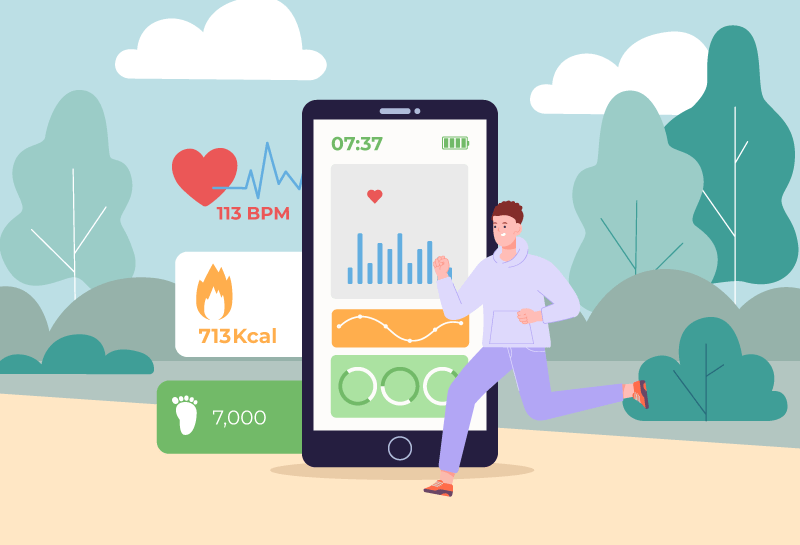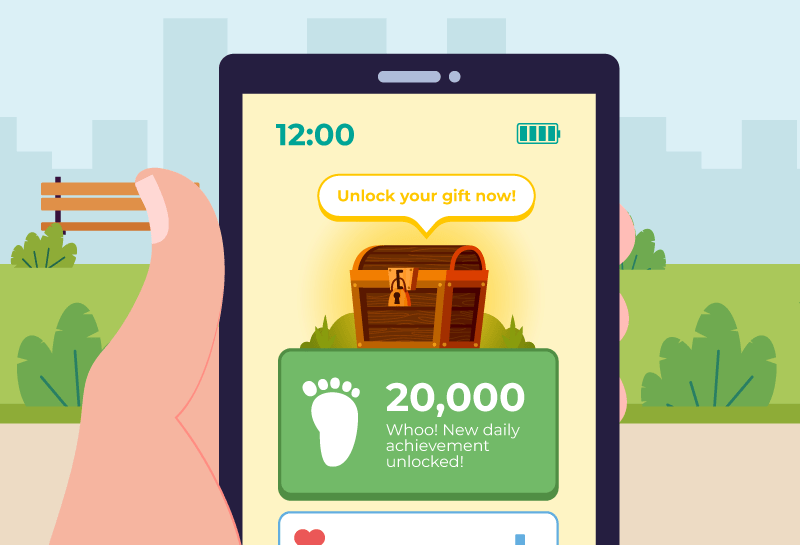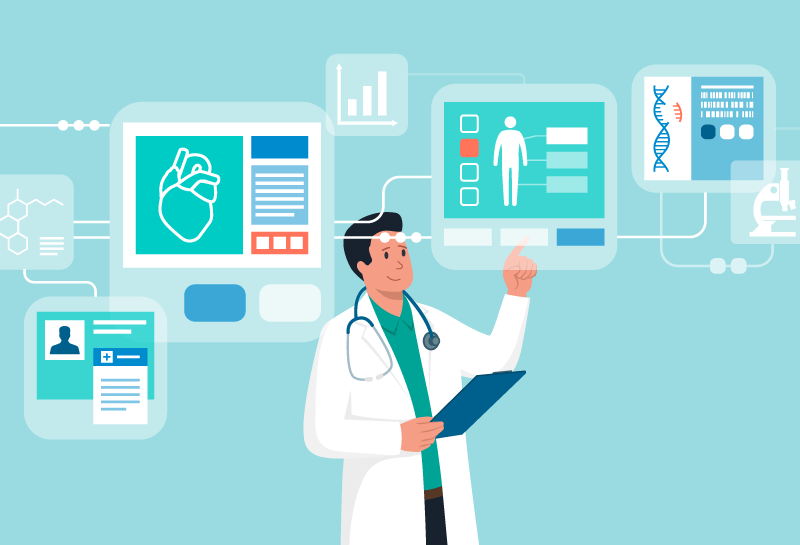The healthcare sector is undergoing a revolution, with once-imagined technologies now shaping the way we monitor, diagnose, and treat diseases. From AI-driven diagnostics to smart devices integrated into our daily lives, the future of health is here. Here are six groundbreaking health technologies transforming healthcare in 2025 and beyond.

What if...
this could save your life tomorrow?
Imagine a world where the technology you use every day doesn’t just make life easier; it keeps you alive. What if a toilet seat could monitor your heart in real-time? Or a wearable device could predict and prevent a stroke before it happens? These once futuristic ideas are now on the brink of becoming everyday life. From groundbreaking wearables to intelligent home devices, today’s innovations aren’t just changing healthcare; they could save your life tomorrow.
Innovative wearables: From heart health monitoring to breast cancer detection
Among the most innovative wearable technologies is the Bloomer Tech bra, which continuously monitors cardiovascular health. With sensors embedded in the fabric, this smart garment detects early signs of heart disease, providing a proactive solution for women to manage their health daily. The sensors are stretchable, washable, and modular, ensuring a comfortable, non-invasive way to monitor heart activity over time.
This device goes beyond early detection; it empowers women by offering continuous monitoring, enabling earlier intervention and better control of their wellbeing.
Researchers at institutions like Massachusetts Institute of Technology (MIT) are also developing wearable technology for early breast cancer detection. Their wearable ultrasound device integrates seamlessly into a bra, offering a non-invasive method to monitor breast health at home. By identifying potential tumours in their earliest stages, this technology could improve outcomes and enable timely intervention.
What it means for you:
- Proactive health management: These wearables allow daily monitoring of heart and breast health, enabling early detection and preventive action.
- Real-time, personalised insights: Continuous, non-invasive data helps you make informed health decisions.
- Greater control over your wellbeing: Wearable devices allow you to stay ahead of potential health issues, giving you more control over your health journey.
OsteoBoost belt: Supporting bone health
The OsteoBoost belt is an FDA-cleared prescription device designed to help prevent osteoporosis and support bone regeneration. Using low-frequency vibrations, it stimulates bone growth and density, particularly in the hips and spine, reducing fracture risk. It received FDA clearance in January 2024 as the first prescription wearable device approved for treating low bone density in postmenopausal women with osteopenia.
What it means for you:
- Proactive, non-invasive bone health support: The OsteoBoost belt offers a convenient, at-home solution for improving bone density, reducing fracture risk, and supporting bone regeneration as we age.
Casana’s Heart Seat: Your health, monitored every time you sit down
What if monitoring your heart health was as simple as sitting down? Casana's Heart Seat is a smart toilet seat that measures vital signs like heart rate and oxygen levels every time you sit. FDA-cleared for home use in May 2023, this device integrates seamlessly into your daily routine, providing continuous monitoring without additional devices or procedures.
Sensors in the Heart Seat transmit vital data wirelessly to healthcare providers, allowing for timely interventions and personalised care based on real-time data.
What it means for you:
- Effortless monitoring: Track critical health indicators, like heart rate and oxygen levels, without any added effort.
- Early detection and personalised care: Real-time monitoring allows healthcare providers to detect potential health issues early and intervene with more tailored, timely care.
Blood test to track organ age: A breakthrough in personalised medicine
Ageing isn’t just about wrinkles and grey hair. In 2023, researchers at Stanford Medicine unveiled a blood test that assesses the biological age of your organs. This test identifies proteins in your blood linked to the health of organs like your heart, liver, and brain, providing a detailed snapshot of your overall health.
The study, which analysed blood samples from over 5,600 participants, found that nearly 20% of adults over 50 have at least one organ ageing at an accelerated rate, which is associated with a higher risk of diseases related to that organ.
What it means for you:
- Personalised health insights: This test provides a clear picture of where your body is showing signs of accelerated ageing, enabling targeted action.
- Proactive disease prevention: Rather than waiting for diseases like heart disease or dementia to develop, this test helps you intervene early with lifestyle changes and treatments.

What if...
your health was just a click away?
Imagine a world where healthcare is always at your fingertips, not just when you're sick, but whenever you need it, wherever you are. Real-time data, AI diagnostics, instant consultations, and wearables offering ongoing care. This isn’t a futuristic fantasy; it’s rapidly becoming the new standard in healthcare.
Wearable blood glucose monitors: Empowering better diabetes control
Diabetes has long been a condition requiring constant vigilance, with daily finger pricks to monitor blood glucose levels. In 2024, continuous glucose monitoring (CGM) systems like those developed by Abbott and Dexcom have emerged as a more convenient solution. These devices provide real-time data, monitoring glucose levels through a small sensor worn on the skin, and send alerts to your phone if your levels are dangerously high or low.
These CGMs empower users to take charge of their health, making it possible to adjust diet, exercise, or medication in real time, preventing dangerous fluctuations before they become a major issue.
In March 2024, the U.S. Food and Drug Administration (FDA) cleared Dexcom's Stelo Glucose Biosensor System as the first over-the-counter (OTC) CGM for adults aged 18 and older who do not use insulin. Abbott also received FDA clearance for its Lingo CGM system in June 2024, aimed at broader health and wellness monitoring.
What it means for you:
- No more finger pricks: Continuous monitoring means no more painful daily tests. You can rely on real-time data to keep your health in check.
- Real-time alerts for better control: Receive alerts directly to your phone, enabling immediate adjustments to prevent dangerous glucose spikes or drops.
3D-printed organs: Solving the organ shortage crisis
Organ transplantation has always been a lifeline for patients with failing organs, but the demand far exceeds supply. Enter 3D printing technology, which is now offering potential solutions. While still in its early stages, researchers have successfully printed simple tissues and are working on creating fully functional organs.
In April 2019, researchers at Tel Aviv University printed the world's first 3D vascularised engineered heart using a patient's own cells, providing that 3D printing could eventually offer custom-made organs. This breakthrough promises to reduce transplant wait times, lower the risk of organ rejection, and help address the organ shortage crisis.
What it means for you:
- Access to life-saving transplants: Personalised, custom-made organs could significantly reduce transplant wait times and save countless lives.
- Reduced risk of rejection: 3D-printed organs tailored to your genetic makeup could reduce the risk of rejection, increasing the chances of successful recovery.
Revolutionising health: Why the pace of innovation matters
These innovations are just the beginning. As technology advances, the speed at which these breakthroughs are adopted will shape the future of healthcare. Faster cancer diagnoses, more accessible organ transplants, and real-time, personalised health management are all within our reach. The real question is: Are we ready to meet the challenges and seize the opportunities that this rapid progress offers?
These technologies are not just improving healthcare; they are set to redefine it. To unlock their full potential, we must act quickly, adapting healthcare systems worldwide to implement these innovations effectively.
A new era in healthcare
These six technologies we’ve explored, from wearables to 3D-printed organs, are laying the foundation for a healthcare revolution. These advancements will not only improve lives but extend life expectancy and make healthcare more accessible than ever before. The future of healthcare will be more personalised, efficient, and proactive, allowing you to take more control of your health and stay ahead of potential issues.
The best part? This future is closer than you think.



 Copied
Copied













 6 mins read
6 mins read 





